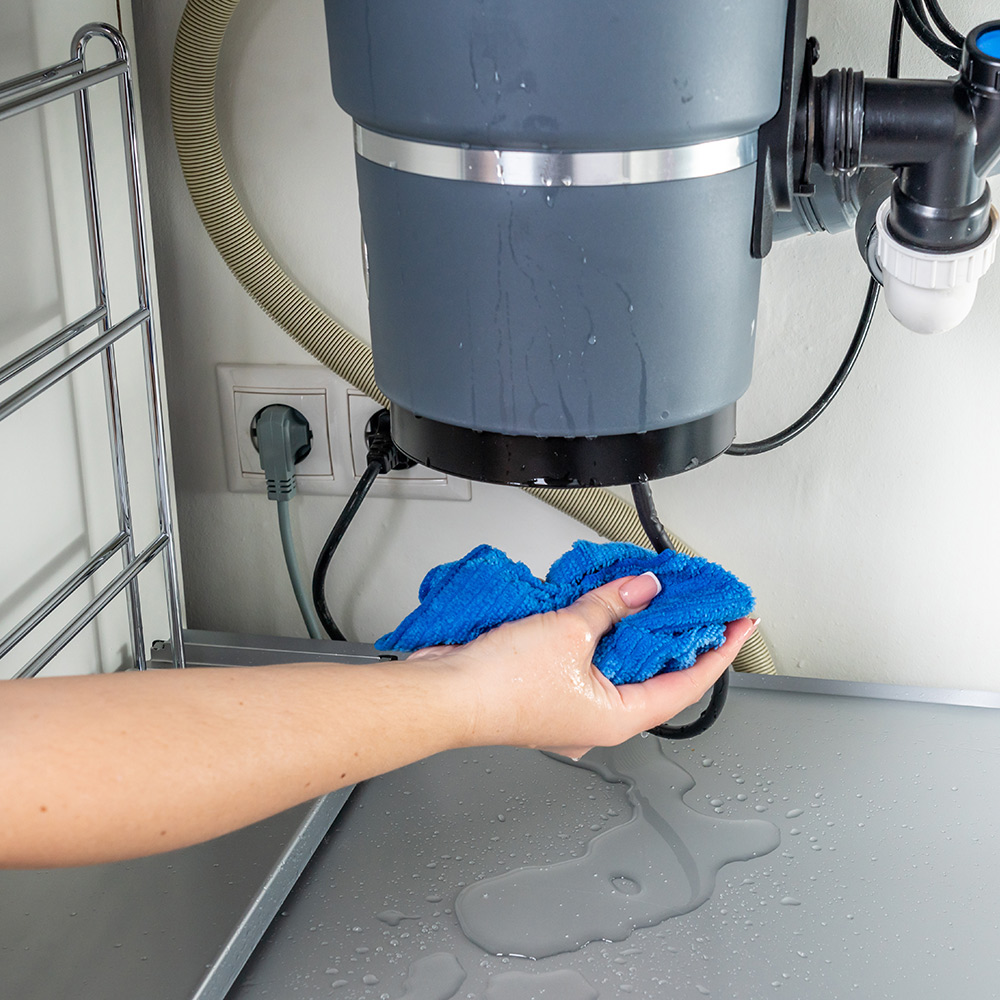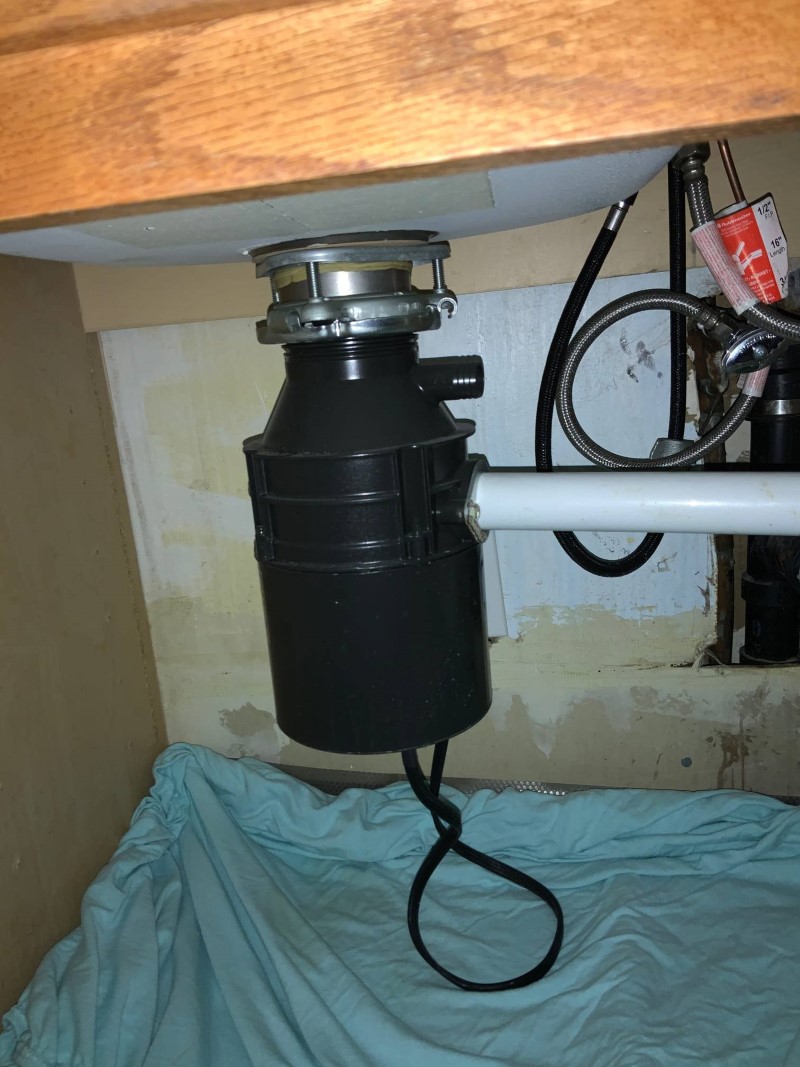Leading Tips for Fixing a Leaking Waste Disposal Unit
Leading Tips for Fixing a Leaking Waste Disposal Unit
Blog Article
What're your thoughts and feelings on Tips on Fixing a Leaking Garbage Disposal?

Garbage disposals are necessary kitchen area devices that assist in dealing with food waste successfully. Nevertheless, a dripping waste disposal unit can be a frustrating and unpleasant issue to take care of. The good news is, numerous leaks can be fixed easily with a few straightforward actions. In this short article, we will certainly go over how to fix a dripping waste disposal unit successfully.
Intro
Waste disposal unit are installed under cooking area sinks and are made to shred food waste right into smaller sized pieces, allowing it to pass through the pipes system quickly. While these devices are generally dependable, leakages can take place gradually due to damage, loosened links, or damages to the unit.
Step-by-Step Overview to Repairing a Dripping Garbage Disposal
Shut off the Power
Before trying any fixings, make certain that the power to the waste disposal unit device is turned off to prevent the threat of electrical shock.
Situate the Leakage
Determine the specific area of the leakage and identify the reason
Tighten Links
Utilize a wrench to tighten any loose connections between the disposal device and the pipes system.
Change Seals or Gaskets
If the leakage is due to used seals or gaskets, eliminate the old components and change them with brand-new ones.
Patching Cracks or Holes
For cracks or holes in the disposal unit, usage epoxy or an appropriate patching material to seal the broken area.
Identifying the Source of the Leak
Before attempting to fix a dripping garbage disposal, it is necessary to identify the resource of the leakage. This can commonly be done via visual assessment or by performing easy tests.
Visual Examination
Evaluate the garbage disposal device thoroughly for any kind of indications of water leak. Pay attention to areas around seals, gaskets, and connection factors.
Testing for Leaks
One means to examine for leaks is by running water via the disposal device and checking for any noticeable indications of leak.
Typical Reasons For Leaks in Rubbish Disposals
Worn Seals and Gaskets
Seals and gaskets play an important role in preventing water from dripping out of the garbage disposal. Gradually, these parts can degrade, bring about leaks around the disposal system.
Loose Links
The connections between the garbage disposal and the pipes system can come to be loosened in time, creating water to leakage out throughout operation.
Splits or Holes in the Disposal Unit
Physical damage to the waste disposal unit, such as splits or holes in the real estate, can additionally result in leakages.
Tools and Products Needed for Dealing With a Dripping Garbage Disposal
Prior to starting the repair work process, gather the necessary devices and products, including a screwdriver, flexible wrench, plumbing professional's putty, replacement seals or gaskets, and epoxy or patching product for fixing splits or openings.
Testing the Garbage Disposal After Repair Work
When the repair service is total, test the garbage disposal by running water via it to guarantee that the leakage has been resolved.
Preventive Upkeep Tips to Stay Clear Of Future Leaks
To prevent future leaks, it is necessary to execute regular upkeep on your waste disposal unit. This consists of keeping it clean, staying clear of putting non-food things or hard objects down the disposal, and occasionally checking for leaks or other issues.
Verdict
To conclude, repairing a leaking garbage disposal is a relatively straightforward procedure that can be completed with fundamental devices and products. By following the click here steps outlined in this write-up and practicing preventive maintenance, you can keep your garbage disposal in good working condition and stay clear of costly repairs in the future.
What to Do About a Leaking Garbage Disposal
A leaking garbage disposal often goes unnoticed until you confront a sopping cabinet, a foul-smelling puddle, or an audible drip-drip-drip from the unit. The fix can be frustrating, too, because the leak can stem from a number of components in the system. Fortunately, with a little sleuthing, you can zero in on the leak and—depending on the exact location—stop the icky oozing and repair the component that caused it. Worst case scenario, if it turns out that the garbage disposal must be replaced, installing a new one is a reasonable do-it-yourself task for those with basic plumbing skills. Read on to keep the cash you’d otherwise hand over to a pro.
Prepare to find the leak
Prior to testing the garbage disposal for leaks, unplug it at the wall outlet and turn off the power from the breaker box to prevent electrical shock. Then insert a watertight sink stopper into your sink drain and wipe the unit dry with a clean cloth. In any handy container, mix a few drops of food coloring into a few cups of water, and pour the dyed water onto the sink stopper to help you locate the leak.
Investigate the source
the top, where the disposal meets the sink drain the side, where the dishwasher hose or main drain pipe connects to the disposal or the bottom of the unit Inspect each of these locations while gliding a light-colored rag over the unit; the dyed water will readily show on the rag and reveal the location of the leak. If a leak isn’t immediately apparent, remove the sink stopper and pour a few more cups of dyed water down the sink drain, then check for leaks again. Leaks near the top of the unit are more likely to show themselves while the sink is plugged, while side and bottom leaks are more noticeable while the sink is unplugged.
The metal sink flange that sits directly inside the sink drain is typically sealed around the top with plumber’s putty (a clay-like sealant) and then secured from under the sink with bolts. If the plumber’s putty deteriorates, or the bolts loosen, the flange can no longer form a watertight seal between the sink drain and the disposal—which could cause a leak at the top of the unit.
To reseal the leaky flange, you must first detach the garbage disposal. Start by loosening the screws securing the main drain pipe to the disposal, then loosen the screws in the metal clamp securing the dishwasher hose to the disposal and detach the drain pipe and dishwasher hose from the disposal. Loosen the screws in the mounting ring that connects the disposal to the metal mounting assembly beneath the sink, then pull down the disposal and carefully set it on a clean, dry surface. Loosen the bolts in the mounting assembly with a wrench, then pull down the mounting assembly and set it near the disposal.

I am very enthusiastic about Tips on Fixing a Leaking Garbage Disposal and I really hope you liked our entry. Loved our write up? Please share it. Help somebody else check it out. I truly appreciate reading our article about How to fix a pretty consistent leak from my garbage disposal.
Booking Page Report this page